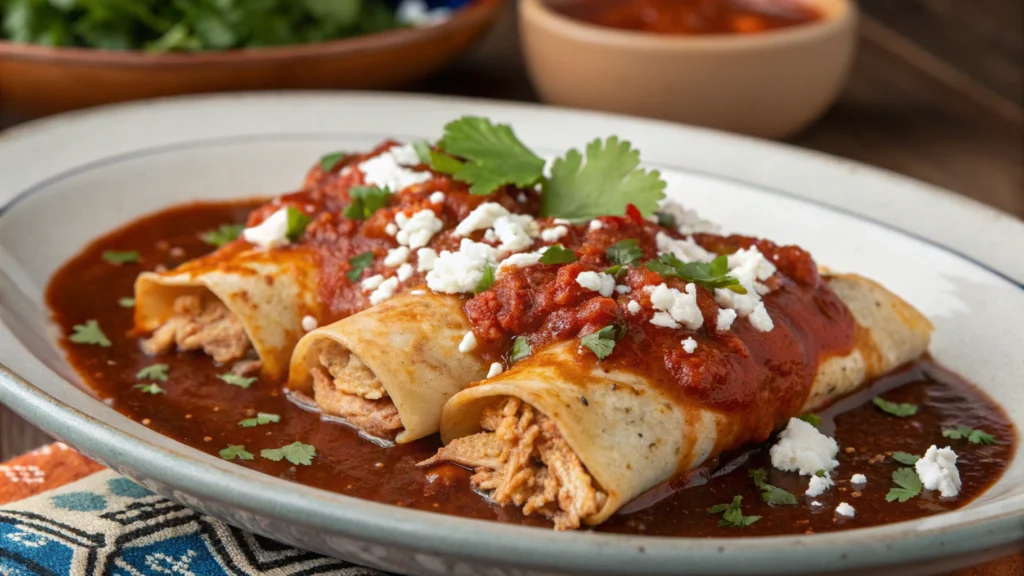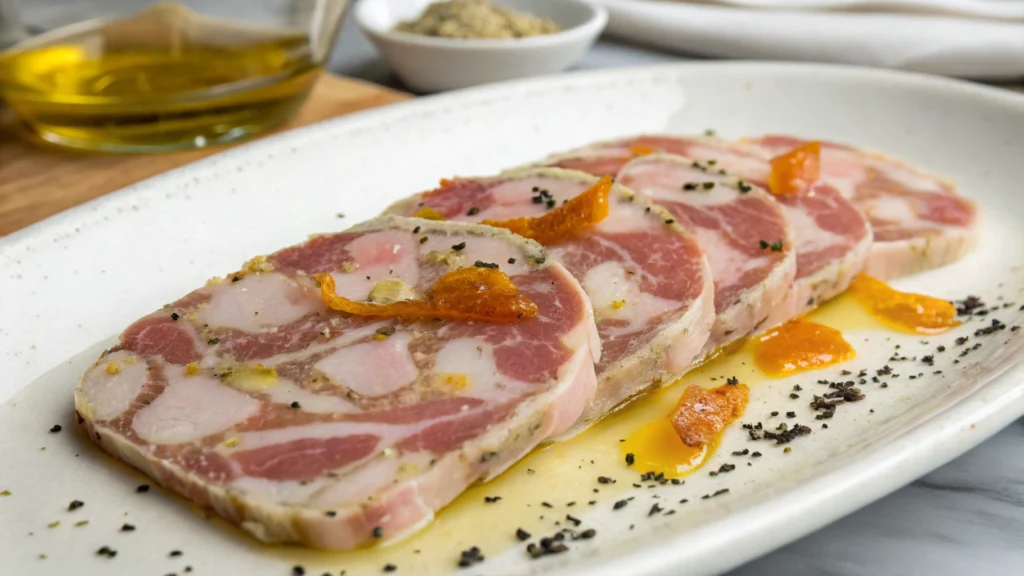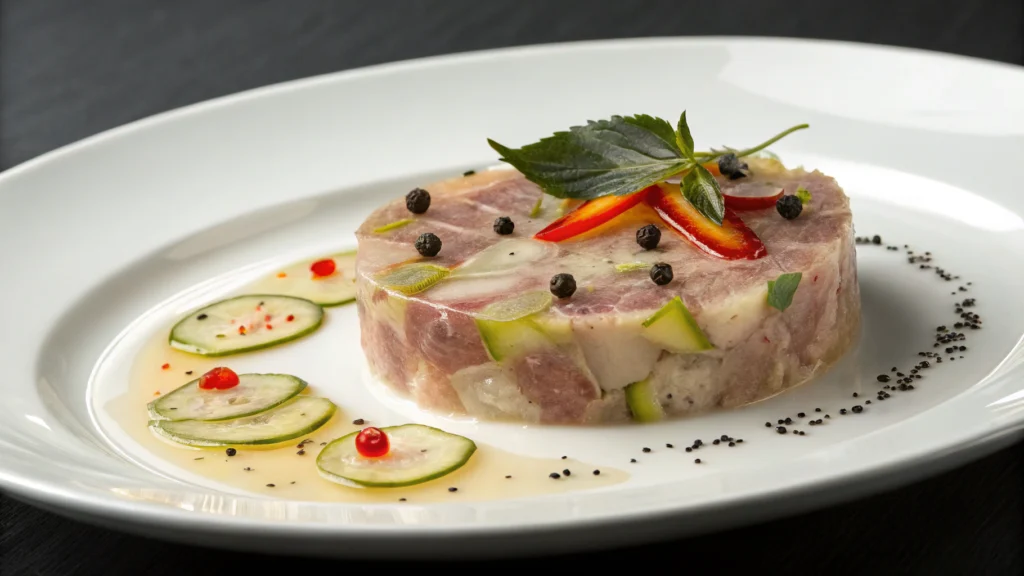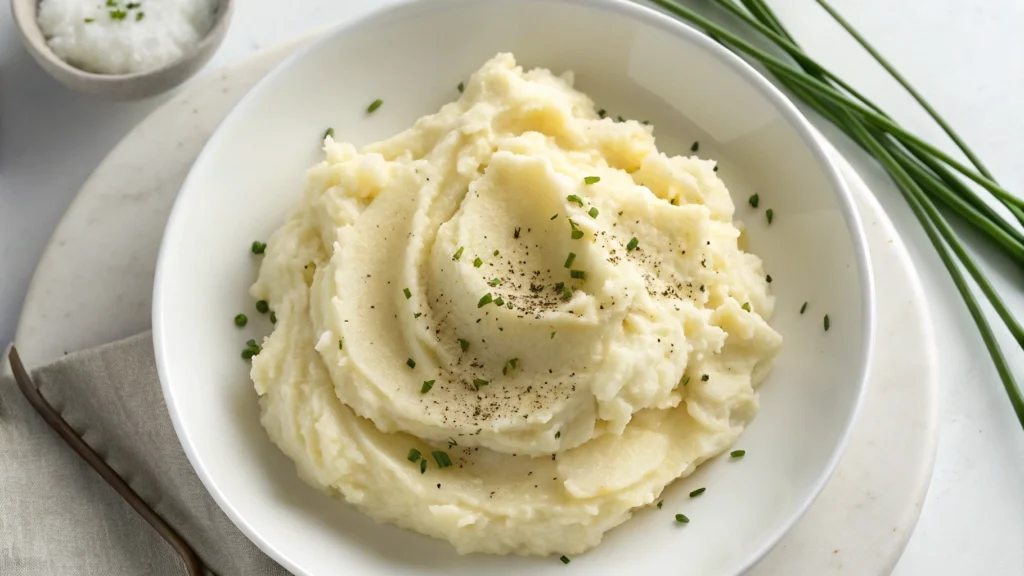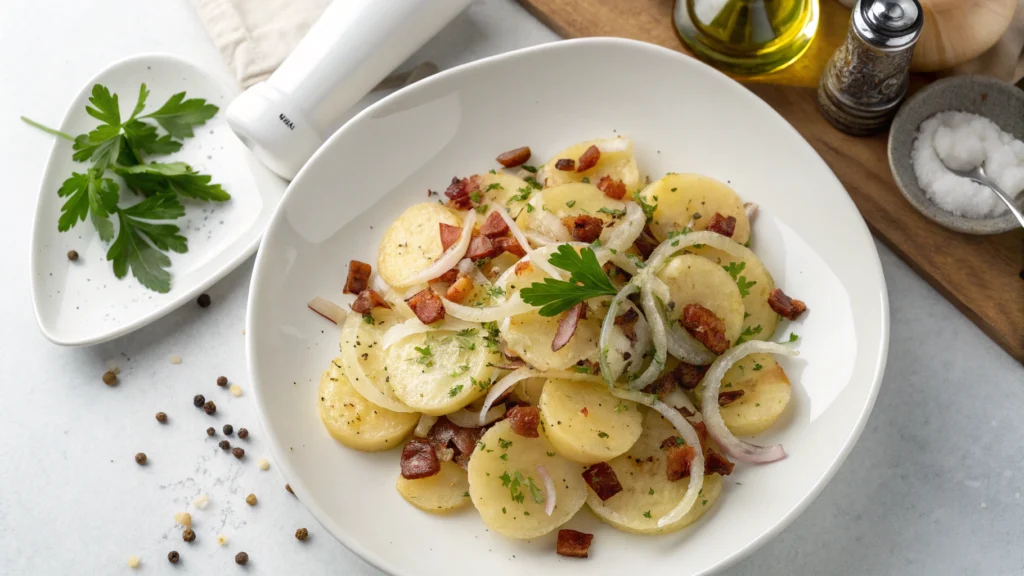
Introduction to the Alaska Roll Sushi.
The seduction of sushi emphasizes its delicate balance between flavor and artistic style. As sushi has so many variations, the Alaska roll is a hybrid of creamy avocado, crunchy cucumber or asparagus, and rich salmon. Wrapped with sushi-grade salmon, this roll has the essence of the wild North Pacific.
The vivid appearance, beautiful colors, and contrasting textures all make it a popular choice for sushi lovers. If you learn to make an Alaska roll at home, you can bring rosty sophistication to your kitchen with creativity and craft.
A bit of History and Regional Inspiration
The Alaska roll is a North American development incorporating ingredients from the bountiful waters of Alaska. As an American creation, it reflects Western values in terms of ingredients and style (as an inside-out roll with generous pieces of salmon on top).
While there is no evidence to substantiate where the Alaska roll was first created, it was likely created in the Pacific Northwest of the United States because they take advantage of the local bountiful seafood through a love of prepared sushi.
The name Alaska roll references the high quality of salmon from this region which is a nod to its sustainability and freshness. The Alaska roll has grown in popularity to illustrate how our globalized food system shapes various kinds of understanding and interactive experiences with different cuisines.
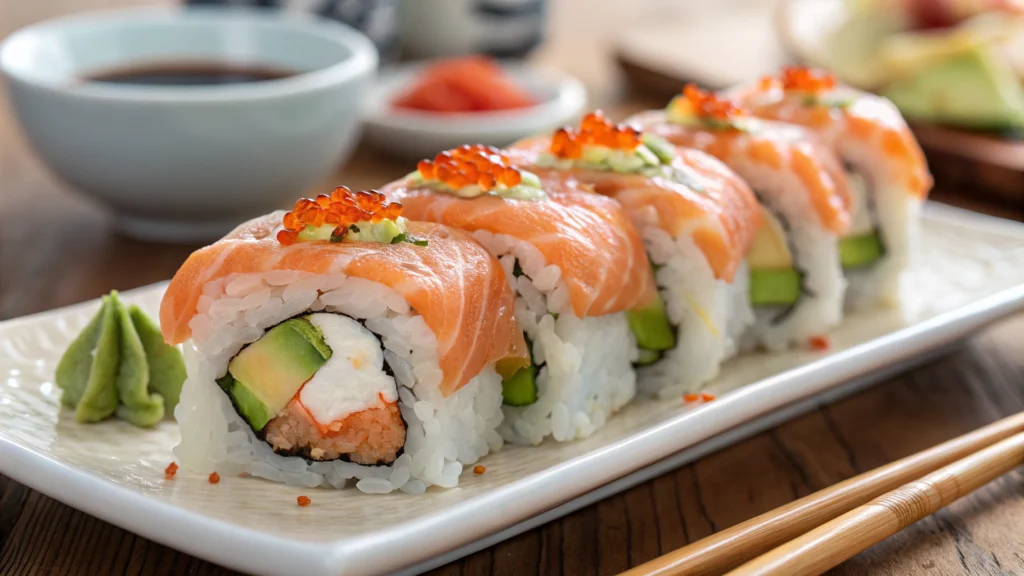
Why Make Alaska Rolls at Home?
The use of homemade Alaska rolls provides you with maximum freshness and variations. You can also make them at a fraction of the price. In a restaurant, Alaska rolls usually sell for $18 – $24 per roll! You are generally only paying for price of the fish, therefore it might cost you $3 or $5 to make at home.
Making homemade Alaska rolls also gives you control over your ingredients. You know exactly what you are getting, while also taking care of any dietary restrictions or preferences.
The process of making sushi is much more complicated than other dishes we might prepare at home, but the satisfaction of turning a few simple components into a delicious, elegant meal is well worth it! The best part, sushi roll making is always fun! Think of friends picking up sushi rolling as a small gathering or for when it is just you wanting to roll sushi on a Saturday night at home to relax!
Description of the Alaska Roll
Flavor and Texture
The Alaska roll has multiple flavors working together that create a delicious experience. The silky piece of salmon literally melts in your mouth, hand-in-hand with the creamy avocado, crispy cucumber, and the sticky sushi rice that holds them together. Nori also provides a layer of umami-like flavor.
You may also top some spicy mayo or tobiko to the top for an added kick! The Alaska roll continues to be delicious, fun, multi-sensory and fluffy experiences to think about and enjoy! Every bite rolls together a luscious taste, but also a refreshing and bright experience at the same time!
Cultural Importance and Contemporary Appeal
While the Alaska roll is not traditional Japanese cuisine, it is culinary fusion; and it symbolizes America’s willingness to embrace sushi while utilizing its own regional ingredients, namely salmon and crab meat. Furthermore, the Alaska roll is designed for novice sushi eaters who may be uneasy about trying raw fish (smoked salmon is often used).
The Alaska roll’s appearance, strong flavors and familiarity in brand-name sushi continuity makes it a popular pick in modern sushi culture. Even the name of this roll emphasizes the similarities between sushi evolved from traditional western cuisine, and contemporary western cuisine as culinary practices from both sides of the ocean developed collaboratively.
Functionality for home cooks
The Alaska roll is versatile, making it a wonderful creation on which to improvise. You can sub shrimp for crab, throw in some sriracha for spicy mayo, or add sprouts for crunchiness. The Alaska roll can accommodate all dietary restrictions (i.e. gluten-free soy sauce, tofu for crab meat).
And, it can be forgiving, leaving beginners the confidence they need to succeed, as well as supporting advanced cooks and although it’s not exquisite in any sense, the application of this roll can be even more impressive than the process. Whether an entertaining dinner party or intimate mealtime, you are guaranteed success if the Alaska roll is being used as a host or a main dish.
Ingredients for an Alaska roll
Essential Components
There are certain unique components to making an Alaska roll, and authenticity comes from sourcing the ingredients as close as you can. Here’s what you need to make 4 rolls (24-32 pieces):
✅ 1 cup sushi rice (must be short grain rice like Koshihikari or Calrose)
✅ 2 tbsp rice vinegar
✅ 1 tbsp sugar
✅ 1 tsp salt
✅ 4 sheets nori (toasted seaweed)
✅ 8 oz sushi grade salmon, thinly sliced
✅ 1 medium avocado, sliced into ¼” strips.
✅ 1 cucumber, seeded and cut into thin strips
✅ 4 oz imitation crab or cooked Dungeness crab
✅ 2 tbsp Japanese mayo
✅ 1 tsp sriracha (optional for spicy mayo)
✅ Soy sauce, wasabi, pickled ginger for serving
Alternatives to Ingredients
If you’re looking to swap out ingredients due to availability, sushi grade salmon can often be found in larger grocery stores like Whole Foods, or Japanese markets.
If you don’t have access to fresh sushi grade salmon, then smoked salmon is safe to use and is packed with flavour, too! You can always swap out imitation crab for real crab for a premium taste, although Imitation crab is more widely available and cheaper, and still yields an okay taste, and budget is important for everyone.
If you want to make a gluten free roll, you can swap out soy sauce with tamari. For vegan versions, marinated tofu or jackfruit may be used, and still be delicious. Those swaps still keep the Alaska roll at it’s essence, but suit your dietary preferences.
Finding Sushi-grade salmon
Sushi-grade salmon is one of the most important aspects of ensuring you are safe and the flavour is going to be authentic. If you don’t have access to a Japanese market, Whole Foods, or a reputable fishmonger, then ask other people about where they have purchased sushi-grade salmon.
And also be sure to ask the store about their sourcing of the salmon to ensure it is frozen as flash-frozen fish is parasite-free, fresh, and has firm, vibrant flesh. Be careful to source your salmon that you can be sure doesn’t have a fishy smell- good salmon shouldn’t smell fishy. There are even sustainable serices like
Time to Prepare and Cook
Time Summary
Making an Alaska roll is a quick task, with a total time of 45 minutes from beginning to end. The time includes preparing the rice, prep time for the ingredients, then rolling. It gets quicker with practice, so this is a great weeknight dinner or for entertaining.
Time to Prepare
The time spent prepping is approximately 15 minutes. You will need to slice the salmon, avocado, and cucumber; mix the crab with the mayonnaise; and set up your space to roll. Having your ingredients prepped in advance will make it easier to combine and roll the Alaska roll.
Time to Cook the Rice
Sushi rice will take approximately 30 minutes to cook, and let cool. Rinse the rice until the water runs clear; using a rice cooker, make the rice using a 1:1.2 rice to water ratio. Allow the rice to cool to room temperature. Rice that is sticky will help the Alaska roll come together.
of Servings Written
Yield
This recipe will make (yield) 4 Alaska rolls, and 24-32 pieces, depending on how thick you slice each piece. Each roll will typically suffice for 1-2 people as a main dish, or 4 people as an appetizer, making this a perfect option for a small gathering.
Scaling Up For Groups
If you would like to scale this recipe to larger groups, you can double or triple the ingredients proportionately. Advance the rice and fillings because it will be easier to work with. One batch (2 cups) of rice will produce at least 8 rolls, which will feed 8-16 people, and everyone can enjoy fresh flavors from the Alaska roll!
Portion Control
Rolls can be cut into 6-8 pieces for easy consumption. As an appetizer you can serve 2-3 pieces per person, or 6-8 pieces as a main. Eat within 24 hours and store leftovers in an airtight container in the refrigerator to preserve texture of the Alaska roll.
Step-by-Step Instructions
How to prepare Sushi Rice
You will need to rinse 1 cup of sushi rice under cold water until the water runs clear to wash excess starch off the rice. Steam the rice in a rice cooker or in a pot on the stovetop for 15 minutes with 1.2 cups of water.
Let the rice steam for 10 minutes after it is cooked! In a small bowl, mix rice vinegar, sugar, and salt, then combine it into the rice while it is still warm. It will take 15 minutes for the rice to cool off to room temperature, which is ideal for stickiness of the rice to help the Alaska roll hold its shape.
Rolling the Alaska Roll
Cover a bamboo sushi mat with plastic wrap to avoid sticking. Lay out a sheet of nori, rough side up. Wet your hands before you handle the rice. Spread out ¼ cup of cooled, prepared sushi rice onto the nori – try to spread it so that there is about a ½ inch border at the top of the nori.
Flip the nori so that the rice is on the bottom. Place down 2 tablespoons of crab mixture, then lay 3 slices of avocado, and then place 3 strips of cucumber onto the nori along the bottom edge. Roll TIGHTLY using the bamboo mat, sealing the edge with a small amount of water. Place 8 thin slices of salmon, overlapping, on the top of the alaska roll.
Slicing and Serving the Alaska Roll
Take a sharp non-serrated knife and wet it so that it doesn’t stick to the roll. Cut the roll into 6-8 even pieces, wiping the knife clean between slices. Carefully plate the pieces, to your liking, adding sesame seeds or tobiko to garnish. Serve the Alaska roll with soy sauce, wasabi, and pickled ginger for full effect.
Tips for Making Perfect Alaska Rolls
Get the Rice Consistency Right
The stickiness of the rice is essential. Be sure to rinse the rice until the water is clear so that it is not too mushy, and avoid too much pressure when spreading it onto the nori so that the individual grains remain intact. Properly cooling the rice will prevent it from becoming leathery in the cooling process, thereby allowing you to have a great base when rolling your Alaska roll.
Make Clean Cuts with Knife Skills
A knife that is sharp and wet is a requirement. Dunk the knife blade in water and let it drip down along the edge prior to each slice. Water prevents rice from sticking, giving you cleaner, sharper cuts that show off the Alaska roll’s colorful layers.
Garnishes that Add Flavor
Take the Alaska roll to the next level by using garnishes. A drizzle of eel sauce, or spicy mayo can give the roll richness. Adding black and white sesame seeds or ikura can provide texture or a briny kick, while enhancing the flavor and presentation.
Nutrition Facts
Calories
A serving of 8-piece Alaska roll (approximately 8.6 oz) is estimated to contain somewhere between 304-450 calories, depending on portion proportions of the ingredients. The 304 calories correlates to approximately 18% of a 2,000 calorie diet, thus, making the Alaska roll a moderate indulgence.
Macronutrient content
Per serving of 8-pieces Alaska roll:
Total fat
7g (1g saturated)
Cholesterol
14mg
Sodium
505mg
Total carbohydrate
63g
Dietary fiber
0g
Sugars
1g
Protein
22g
These values are impressive for the Alaska roll as it provides healthy fats from salmon and avocado, while the protein helps with satiation.
you ma like it
